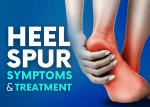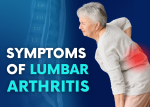
Toe walking can occur in people of all ages. However, babies and children experience this problem more often. After a certain age, they stop walking this way. They start walking on their heels without the intervention of parents or doctors. This is why most parents are not concerned about tiptoeing. In some cases, however, this way of walking can be linked to various disorders.
It is important to consult with specialists and carry out the necessary examinations and tests before deciding whether a baby or child can walk on tiptoe. If you observe that your child walks on tiptoe, you can make an appointment with our orthopedic doctors and reach the correct diagnosis.
In the rest of our article: “What is tiptoe walking?”, “Is tiptoe walking normal?”, “What are the causes of tiptoe walking?”, “Diagnosis of tiptoe walking”, “How to improve tiptoe walking?” and “What are the exercises for tiptoe walking?”.
Contents:
- What is Tiptoe Walking?
- Is Tiptoe Walking Normal?
- What are the Causes of Tiptoe Walking?
- Diagnosis of Tiptoe Walking
- How to Fix Tiptoe Walking?
- Toe Walking Exercises
What is Toe Walking?
Toe walking is a walking style in which the heel does not touch the ground and is realized by stepping on the tips of the toes. Toe walking can also occur in adults, but in children it requires special follow-up.
Fingertip Walking in Infants
Infancy is the first two years after birth. Tiptoe walking in infants can develop with or after the first toddler starts walking. The baby’s history of toe walking, birth history, family history, muscle-joint examination and nerve examination are important in the evaluation of toe walking.
Toe Walking in Children
Childhood covers the period from the age of two until the age of eighteen. Children are the group with the highest incidence of toe walking. The incidence is between 2 and 5 percent. As with infants, it is necessary to carry out the necessary tests and make sure what the cause is.

Is Toe Walking Normal?
In order to evaluate abnormal (non-normal) gait, it is first necessary to know normal gait. In normal walking, the two legs work in coordination with each other. Step with one leg behind the other. After taking a step, the first contact with the ground is with the sole of the foot.
In normal walking, it is seen that the muscular, skeletal, nervous, circulatory and respiratory systems work in harmony and integrity. Problems in these systems can also affect walking.
With the transition of the baby to childhood, motor skills, i.e. the ability to move, develop. The way of walking therefore changes drastically after the age of two. The development of walking continues throughout childhood and is completed at around seven years of age. Therefore, different gait patterns and tiptoe walking seen in infancy and early childhood can be normal.
When do babies walk properly?
Walking in infants is different from adult walking. Babies walk with short and frequent steps, with broken knees and without pulling the ankle back too far. This is popularly referred to as “waddling”.
Babies usually start walking without support between 10 and 18 months of age. However, since their motor skills are still developing, it will be around the age of seven before they can walk like adults.
What are the Causes of Tiptoe Walking?
There can be many reasons for toe walking. Therefore, it is important to take a detailed history, perform a physical examination, perform the necessary tests and evaluate the findings in children who walk on tiptoe. The cause of toe walking may be related to the muscular and nervous system or may develop due to an orthopedic disease. The disorders that can cause tiptoe walking are listed in the table below (Table 1).
Table 1. Fingertip Walking and Related Disorders
| Table 1. Fingertip Walking and Related Disorders | |
| Nervous System Diseases of the Brain and Spinal Cord | Cerebral Palsy Brain Trauma Spinal Cord Trauma Mass/Tumor in the Brain Tethered Cord Spina Bifida |
| Nervous System Diseases of Nerve Origin | Neuropathy (Structural Disorder of the Nerve) |
| Muscle Diseases | Muscular Dystrophies Spinal Muscular Atrophy (SMA) |
| Orthopedic Diseases | Clubfoot (Pes Equinovarus) Hip Dislocation Joint stiffness Leg Length Inequality Ankle and Foot Trauma |
In children who walk on tiptoe, the conditions that require urgent medical attention are as follows:
- Unilateral (on one leg) tiptoe walking,
- Delay in the development of the child’s movements,
- History of preterm birth (prematurity),
- History of postpartum trauma or illness,
- Sudden onset of tiptoe walking and limping,
- Sudden onset of urinary and major toilet incontinence.
Another curious question about tiptoe walking is “Do children with autism walk on tiptoe?”. Autism is another developmental disorder that causes tiptoe walking. Tiptoe walking seen in autism can cause achilles tendon shortening in later stages.
Diagnosis of Tiptoe Walking
If toe walking is observed in children, a detailed birth, infancy and family history will be taken by the orthopedic doctor. The child’s gait, range of motion and muscle flexibility will also be assessed during the physical examination. If needed, the following imaging methods will be utilized:
- X-rays of the affected area and adjacent joints,
- Brain MRI -MR (Magnetic Resonance Imaging),
- Spinal Cord MRI -MR (Magnetic Resonance Imaging).
Important examination findings in children who walk on tiptoe are as follows:
- Excessive size of the skull (macrocephaly),
- Small head circumference compared to normal (microcephaly),
- Dimpling or increased hair growth at the waist,
- Increased reflexes, pathological reflexes (reflexes due to neurological disorders),
- Rapidly progressive scoliosis (curvature of the spine),
- Gait and movement disorders other than tiptoe walking.
If the cause of toe walking cannot be found, this condition is referred to as idiopathic (unknown cause) toe walking or habitual (habitual) toe walking. To make the diagnosis of idiopathic toe walking, the patient’s physical examination findings and imaging findings must be completely normal.Idiopathic toe walking usually resolves spontaneously. However, in some children it can be permanent, causing Achilles tendon shortening and muscle tension. The treatment option for children with idiopathic toe walking is decided by the Pediatric Orthopedic Specialist.

How to Fix Tiptoe Walking?
How to Fix Toe Walking?
The treatment option to be applied in a child with toe walking is decided by taking into account the condition, its severity, the age of the child and previous treatments.
If the examination findings and imaging results in infancy (0-2 years) are normal and there are no emergencies mentioned above, only follow-up may be sufficient. The family should learn that this condition may be temporary and should be informed about the conditions under which they should consult a doctor. However, if toe-tip walking persists after infancy, i.e. in childhood (3-18 years), further treatment options may be necessary.
If toe walking is caused by a muscle and nerve-related disease, the first step in treatment is exercise, orthotic (device) therapy and physical therapy. The aim of early device therapy and physical therapy is to prevent the development of joint stiffness and eliminate the need for surgery.
Achilles tendon tension, which can cause toe walking, can be treated according to the movement of the ankle joint. Surgical treatment may be necessary if there is no backward movement of the ankle (dorsiflexion) or even if the ankle never reaches zero degrees, that is, the normal stepping position.
In cases where the ankle is at zero degree, serial casts can be applied. However, serial cast treatment is not preferred due to skin sensitivity, edema and patient compliance difficulties. For this reason, device therapy and physical therapy are often applied. However, surgical treatment may be required in cases where device therapy and physical therapy fail.As a result, tiptoe walking may disappear spontaneously or may require device therapy, physical therapy, exercise and surgical treatment when it is caused by serious disorders. You can get support from our Orthopedics and Traumatology Doctors, who are experts in their field, in determining the diagnosis and treatment in this field.
Physical Therapy for Toe Walking
Physical therapy initiated early in children with toe walking eliminates the need for surgical treatment in most patients and provides improvement of toe walking. For this, it is important to do both the exercises in physical therapy and home exercises without interruption and correctly. Physical therapy:
- Relaxation and strengthening exercises,
- Manual therapy
- Kinesiotherapy
- Device therapy,
- Night device therapy,
- Balance exercises are practiced.
Toe Walking Exercises
Fingertip walking exercises planned to be performed at home can be practiced without any equipment. They are effective when applied correctly, as indicated in the visuals and instructions. Only the Orthopedic Doctor and Physiotherapist should decide which exercises are appropriate and for how long they should be performed.
Here are exercises you can do with your child with toe walking.
Achilles Tendon Stretching Exercise

- Place your child on their back on a hard surface.
- Ensuring that your child’s knees are straight and supported from below, gently bend the ankle upwards towards the head.
- Stretch the ankle for 15 to 30 seconds as far as your child’s range of motion allows.
- Make sure that this exercise is not painful for your child.
Squatting and Crouching Walking

- Squatting, squatting walking and playing with your child in this position is a very important and practical exercise in the treatment of tiptoe walking.
- Make sure that your child’s foot is in full contact with the floor during this exercise.
Penguin Walk

- Have your child step forward with their toes up and their feet touching the ground.
- You can support your child with your hand, as they may need help to walk this way at first.
If you observe that your child is walking on toe and this situation has been going on for a while, you can consult our Orthopedics and Traumatology Doctors immediately.
Remember that, as with any other condition, if the underlying cause of toe walking is diagnosed and treated early, surgery can be prevented.
You can contact us to get support from our specialist doctors in the diagnosis and treatment of toe walking; you can send us the questions you are curious about from our social media accounts.









Leave a Comment